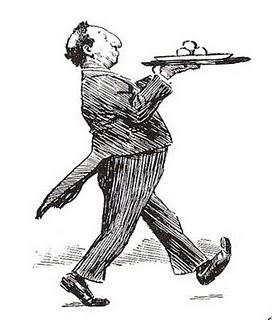Er… Yum?
 Ann’s Foodie Walk is in the offing again, this Saturday 14th May…
Ann’s Foodie Walk is in the offing again, this Saturday 14th May…
After the feasting and the celebration, the calorie counting and the diet. But if you were a hermit in the Middle Ages, it was diet all the time. The locusts and wild honey of John the Baptist were luxury – how about a lifetime on bread and water, or a monk in the Middle East who ate only the other monks’ leftovers, tipping them into a bowl and consuming just a little each day. When the bowl started to smell, or he noticed worms in it, he just topped up the bowl with more recent leftovers.
For these and other nauseating details I am indebted to a book to be published next week (May 19) - A Hermit’s Cookbook: Monks, Food and Fasting in the Middle Ages, by Andrew Jotischky. You might want to try his recipe for tree bark, which can be boiled, crisped in the oven, and eaten as bread. Or wild grass porridge, for which you gather the grasses, extract the seeds, then wash, soak and crush, before cooking like porridge. Best if you don’t have a large appetite, I think.
But it wasn’t always like this. The mediaeval monks at Westminster Abbey had, in theory, only four days a week on which they were allowed to eat meat. So they tackled the problem ingeniously – they made a distinction between ‘meat’ – a roast joint, and ‘meaty dishes’ – stews such offal pie, which didn’t count. The Norman Abbot who arrived at Winchester found his monks eating meat on forbidden days. He soon stopped this by ordering particularly tempting fish dishes to be put on the menu.
At Westminster Abbey there was a daily gallon of ale for each monk, and a 2lb loaf each. Wine was served on feast days, and there were 56 days of pancakes, between Easter Sunday and Trinity. Perhaps not surprisingly, the most common health problems were liver complaints and obesity.
For more foodie titbits, from the Middle Ages to the 21st Century, join my next foodie walk on Saturday, May 14. 10.00 am at Monument tube, Fish St. Hill exit.

